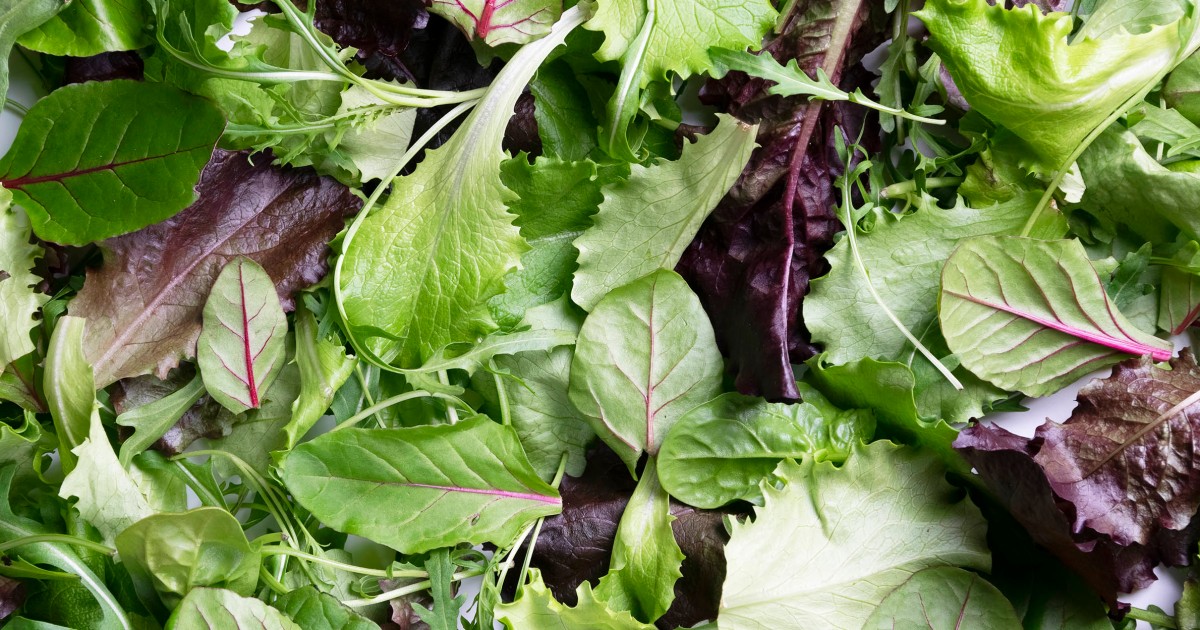Fried foods aren’t exactly a top food choice among most dietitians, but they can be part of a healthy diet when enjoyed as a treat in moderation and cooked in healthier oils.
Whether it’s french fries, fried chicken or donuts, sometimes frying is just the optimal cooking method for texture and taste.
You’ve probably heard that some cooking oils are better for you than others, but the nutritional value of the oil in the bottle may not be the same after cooking, especially at high temperatures.
What are the healthiest oils to use for frying? Dietitians explain which oils are best to use for frying and which to limit or avoid.
What cooking oils are healthiest for frying?
“Frying and cooking methods that require the use of a lot of oil are generally not recommended, however, in moderation, they can definitely be a part of a healthy, balanced diet,” Jamie Mok, registered dietitian nutritionist and media spokesperson for the Academy of Nutrition and Dietetics, tells TODAY.com.
Oils are basically pure fat that’s liquid at room temperature. Though it can get a bad rap, fat is an essential nutrient the body needs to function properly. It provides us with energy and helps the gut absorb vitamins, says Mok.
The key is to eat more healthy or “good” fats, aka polyunsaturated and monounsaturated fats, and limit or avoid unhealthy or “bad” fats (saturated and trans fats), per the American Heart Association.
Healthy fats have been shown to reduce inflammation, lower the risk of heart disease, stabilize blood glucose levels and boost brain health, TODAY.com previously reported.
Oils rich in healthy fats
“From a nutrition perspective, I recommend cooking mostly with plant oils, which are generally lower in saturated fat, and higher in mono- and polyunsaturated fats,” says Mok.
“Studies have shown that replacing saturated fats with unsaturated fats coming from these plant oils can help decrease our total and LDL (or “bad”) cholesterol,” says Mok.
The lower the saturated fat content of the cooking oil, the better. AHA recommends choosing cooking oils with less than four grams of saturated fats per tablespoon.
Plant oils rich in unsaturated fats also provide essential fatty acids, such as omega-3s, which the body can’t create on its own and we need to get from dietary sources.
Oils from nontropical plants
“I would exclude tropical oils in the plant oil recommendation,” says Mok. Plant oils may come from fruits, vegetables, nuts or seeds.
Oils from nontropical plant sources tend to be healthier whereas those from tropical plants — such as coconut or palm oil — are significantly higher in saturated fat and solid at room temperature.
Animal fats — such as butter or lard — also contain high amounts of saturated fat and have been shown to raise bad cholesterol, TODAY.com previously reported.
Oils with a high smoke point
Frying involves cooking food in hot oil. The normal temperature range for frying is about 325 to 375 degrees Fahrenheit, but it can be as high as 400 degrees, according to Oklahoma State University.
“When it comes to frying, we want to pay attention to oil smoke points, which is the temperature at which oils start to break down and burn,” says Mok.
All cooking oils have a particular smoke point, which can vary greatly, according to the U.S. Department of Agriculture.
Heating oil beyond its smoke point can cause the oil to react with oxygen (oxidize), which can destroy nutrients and release harmful pollutants, says Mok. These include compounds called free radicals, which can damage cells. Oxidization can also degrade the oil’s taste, causing it to become bitter and rancid.
Oils that are higher in monounsaturated fats are best for frying because these are more stable when exposed to high temperatures and do not oxidize as quickly, Mok notes.
“The antioxidants and fat levels in the oil (also) determine how quickly it will oxidize,” Natalie Rizzo, nutrition editor for TODAY, previously told TODAY.com. The higher the antioxidant levels, the more stable the cooking oil is when heated at high temperatures.
The healthiest oil to use for frying
Other factors to consider when choosing oil for frying are flavor and processing. Ideally, you want a milder, neutral-tasting oil — these are typically refined oils, which also have a higher smoke point.
Avocado oil
Avocado oil is a top pick among experts for frying. “Looking at the smoke points of nontropical plant oils and looking at which one is healthiest, what stands out to me is avocado oil,” says Mok.
Avocado oil is rich in heart-healthy monounsaturated fats, specifically, oleic acid, says Mok. Oleic acid is an omega-9 fatty acid which can help lower bad cholesterol. Avocado oil is also low in saturated fat, and polyunsaturated fats — the latter is less stable.
“It has a higher smoke point, and a neutral flavor too,” says Mok, which makes avocado ideal for frying and other high-heat cooking methods. The smoke point of avocado oil is about 520 degrees Fahrenheit, TODAY.com previously reported.
The only downside? Avocado oil can be expensive and is often sold in smaller quantities. Because frying requires using a lot of oil, it may not be the most affordable or practical choice for some.
One tablespoon of avocado oil contains about 124 calories and 14 grams of fat, according to the UDSA.
Olive oil
Olive oil is another healthy choice for frying, but the type of olive oil you use matters. Refined or “light” olive oil is your best bet, as it has a milder taste and can withstand higher temperatures.
Nutritionally, avocado oil and olive oil are very similar, says Mok. Olive oil is rich in monounsaturated fatty acids and low in saturated fat. It also contains high amounts of vitamins, minerals and antioxidants which have been shown to help reduce inflammation.
Olive oil has a lower smoke point than avocado oil — it withstand temperatures up to about 410 degrees Fahrenheit, per the USDA. As long as you’re frying food in the recommended temperature range of 325 to 375 degrees Fahrenheit, it shouldn’t burn or go rancid.
Refined olive oil has a higher smoke point, up to 470 degrees. The refining process makes oil more shelf- and heat-stable, but also removes some of the nutrients, TODAY.com previously reported.
While unrefined extra virgin olive oil is one of the healthiest oils you can buy, it has a low smoke point and stronger flavor — which means it should be used for dressings or low-heat cooking, not frying.
One tablespoon of olive oil contains about 119 calories and 13.5 grams of fat, per the USDA.
Peanut oil
Peanut oil is another top choice for frying, says Mok, due to its healthy fat content, neutral flavor and high smoke point.
Peanut oil is high in unsaturated fats, which can help lower the risk of heart disease and blood sugar levels, and it’s also a great source of heart-healthy oleic acid, Mok notes. Peanut oil is also rich in vitamin E, which can help protect heart, brain, skin and eye health.
Refined peanut oil can withstand temperatures up to 450 degrees Farhenheit, per the USDA. Because it’s also more accessible and affordable, peanut oil is a great choice for deep-frying.
However, peanuts are a common allergen, says Mok, so it’s not a healthy choice if you have an allergy or sensitivity to peanuts.
One tablespoon of peanut oil contains about 119 calories and 14 grams of fat, per the USDA.
Other healthy oils for frying
Due to their higher smoke point and low saturated fat content, the following oils are also good choices for frying, says Mok:
- Grapeseed oil
- Safflower oil
- Sunflower oil
- Canola oil
- Vegetable oil
Least healthy oil for frying
Oils with low smoke points are the least healthy oils to fry with because the high heat will burn and oxidize the oil, which destroys nutrients and releases harmful pollutants, Mok says. These include:
- Unrefined flaxseed oil
- Wheat germ oil
- Unrefined walnut oil
- Pumpkin seed oil
- Hemp seed oil
While these oils can be healthy as-is when used in dressings or drizzled on foods, they can degrade rapidly and lose their benefits if used for frying or other high-heat cooking methods.
Tropical oils that are high in saturated fat should also be limited, says Mok. Coconut oil is 80–90% saturated fat and the smoke point is only 350 degrees Fahrenheit, making it a less healthy choice for frying or cooking in general, TODAY.com previously reported.
“According to experts, across the board, we’re recommending to lower our intake of saturated fat,” Mok notes. The Dietary Guidelines for Americans recommends adults limit saturated fat intake to less than 10% of their daily calories.
“It’s not to say you can’t cook with coconut oil at all, but we should cut back on tropical oils, as well as the other forms of saturated fat such as animal fats,” says Mok.
Tips for cooking with and storing oil
Moderation is key. The serving size for oil is small (one tablespoon) and having more than that can drastically up the calorie count, Rizzo noted.
Draining the oil from fried food after it’s done cooking can help reduce your intake. Using oil sprays and measuring spoons can also help you control the amount you use when pan-frying, Mok adds.
It’s important to use and store cooking oil properly to maintain its freshness, taste and nutrition value.
- Store oil in a dark, cool place
- Do not use expired cooking oil
- Discard oil if it catches fire or smokes
- Do not reuse cooking oil
- Do not refrigerate cooking oils
Read the full article here
















